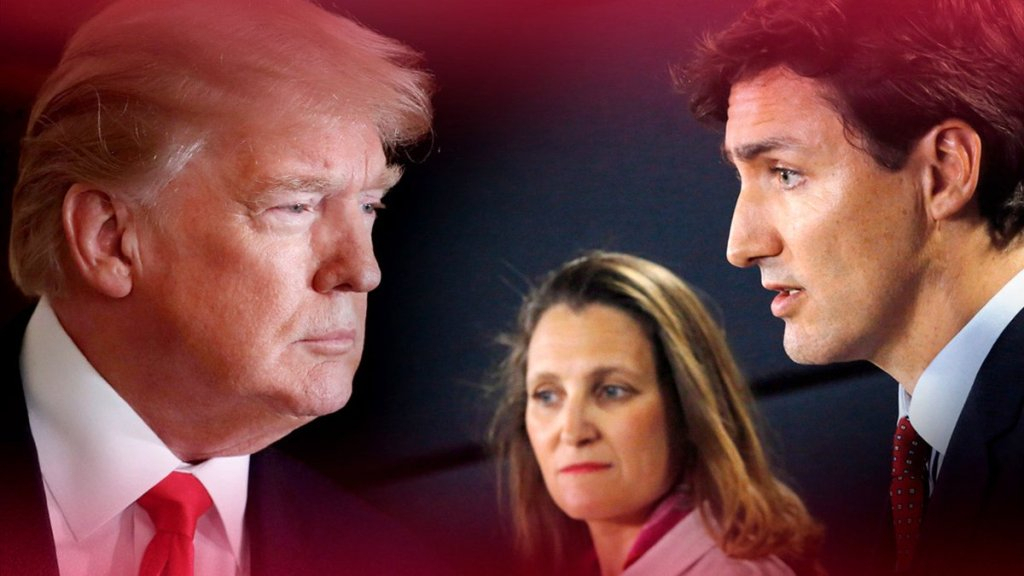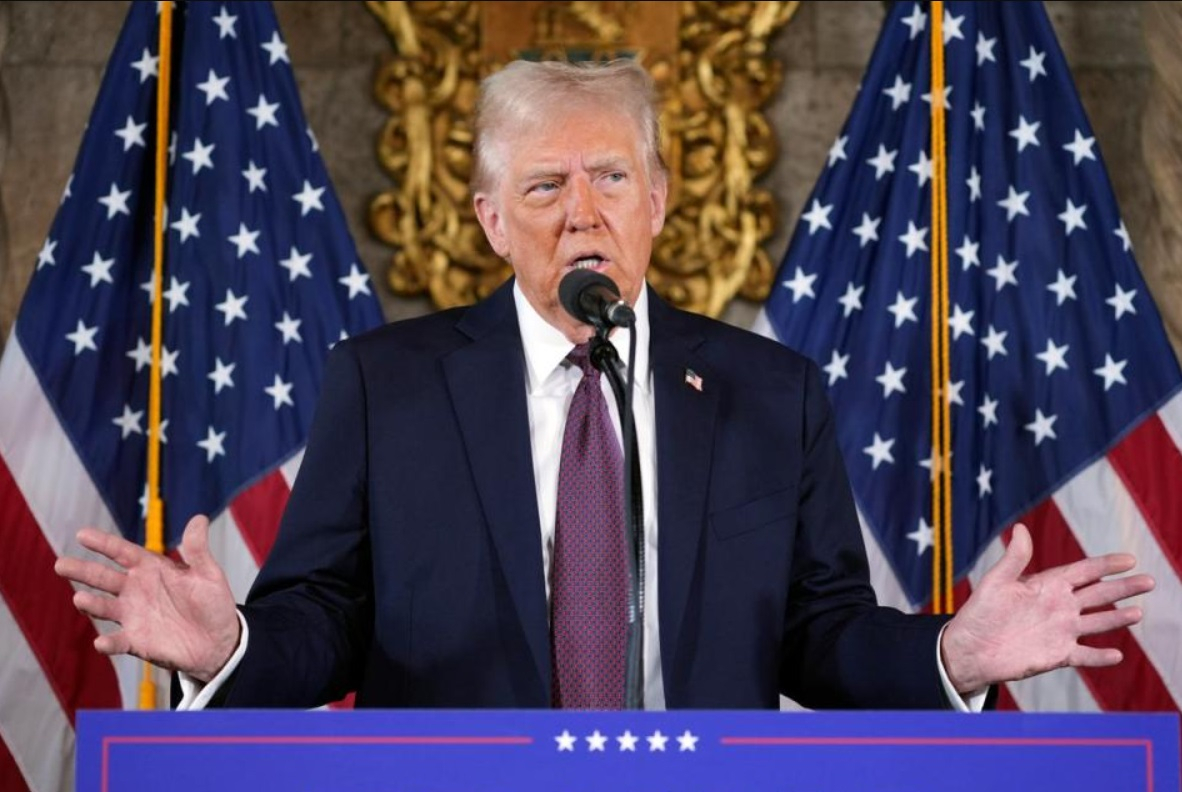US President Donald Trump engaged in crucial talks with Canadian Prime Minister Justin Trudeau on Monday as both countries braced for the implementation of new tariffs on each other’s imports. Although the specifics of the conversation between Trump and Trudeau have not been fully disclosed, Trump took to social media to announce that he had spoken with the Canadian PM and would be following up with another conversation later that afternoon at 3 p.m. EST. The high-stakes dialogue centered around the growing tension surrounding the new tariffs and their potential economic impact on both nations.
The background to the tariff imposition lies in Trump’s push to address issues such as drug trafficking and what he perceives as unfair trade practices. In a series of posts on his Truth Social platform, Trump defended the tariffs, claiming that Canada’s banking regulations and its role in the flow of illicit drugs into the United States were critical factors in his decision to impose trade barriers. The White House quickly clarified, however, that the tariffs were not intended to escalate into a trade war between the two countries, suggesting that there had been a misunderstanding of Trump’s executive order.
On the same day that Trump spoke with Trudeau, he also moved forward with imposing sweeping tariffs on products coming from Canada, Mexico, and China. The 25% tariffs are slated to take effect on Tuesday, February 4, and Trump made it clear that the intention behind these actions was to combat the flow of fentanyl, illegal immigration, and to rectify what he believes are trade imbalances that have harmed the US.
Trump’s rhetoric surrounding the tariffs has been direct, emphasizing the need for stronger border security and more stringent measures to prevent drugs from entering the country. In an earlier interview, he explained that both Canada and Mexico needed to take immediate action to curb illegal immigration and drug trafficking if they hoped to see the tariffs lifted. According to Trump, the US had been subjected to unfair trade practices for years, resulting in the US being “ripped off” by nearly every nation in the world.
While the impact of the tariffs on the economy remains to be seen, Trump acknowledged that the initial effects could place strain on American consumers. Nevertheless, he argued that, in the long term, these actions would be beneficial for the country. He also pointed out that the tariffs were part of a broader effort to address systemic issues that have long affected US trade and security.
In a significant development, Trump had previously decided to temporarily hold off on imposing additional tariffs on Mexico after a conversation with Mexico’s President Claudia Sheinbaum. This shift followed Sheinbaum’s commitment to deploying 10,000 Mexican soldiers to reinforce the US-Mexico border. The deployment of these troops was aimed at curbing the flow of fentanyl and other illicit drugs into the US, a move that Trump praised in his social media posts. He confirmed that the tariffs on Mexico would be delayed for one month, during which time both governments would engage in further negotiations to address the underlying issues.
Sheinbaum’s response to the tariff-related discussions emphasized the importance of respect for bilateral relations and sovereignty. In her statement, she confirmed that Mexico would immediately deploy 10,000 National Guard troops to the northern border to tackle drug trafficking. This move aligns with Trump’s stated goals of preventing fentanyl from crossing into the US, although Sheinbaum’s remarks did not explicitly mention addressing immigration as part of the solution. Trump, on the other hand, framed the deployment as part of a broader strategy to combat both illegal migration and drug trafficking.
Sheinbaum also noted that the US had committed to working with Mexico to address the trafficking of high-powered weapons into the country, an aspect of the discussions that was notably absent from Trump’s comments. This discrepancy highlights some of the areas of divergence in the negotiations, with both sides focused on different aspects of the problem.
The disagreement also touches on broader concerns raised by Trump in an executive order signed over the weekend. The order accused Mexican drug trafficking organizations (DTOs), also known as cartels, of being the primary source of fentanyl, methamphetamine, cocaine, and other illicit drugs that have flooded into the US. Trump stated that the Mexican government had allowed cartels to operate freely, exacerbating the drug crisis and contributing to the overdose deaths of hundreds of thousands of Americans. The executive order described this situation as an “intolerable alliance” between the cartels and the Mexican government, placing immense pressure on the relationship between the US and Mexico.
The new tariffs, which will be enforced starting February 4, include a 25% levy on all goods imported from Mexico. In response, Sheinbaum had warned of retaliatory tariffs on US products. Despite these tensions, the tariffs on Canada and Mexico are part of Trump’s broader strategy to push for “balanced trade” and stronger border enforcement, which he insists is necessary to protect the American economy and national security.
Although Trump’s tariffs on China have not been modified, discussions with both Mexico and Canada are ongoing. As the deadline for the tariffs draws nearer, both sides appear to be engaged in high-level negotiations, trying to avoid further escalation. Trump’s call with Trudeau, along with his continued talks with Sheinbaum, are crucial in determining whether any progress can be made to de-escalate the situation.
In conclusion, the ongoing tariff dispute between the US, Canada, and Mexico is a major geopolitical issue that highlights the tensions between trade policy, border security, and the fight against drug trafficking. As both sides continue their negotiations, the outcome of these discussions will likely have significant ramifications for the economies and relationships between these North American nations in the months ahead.




